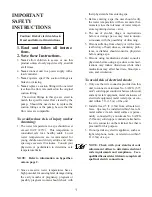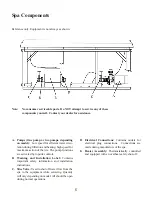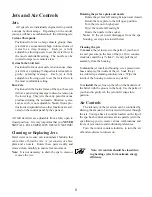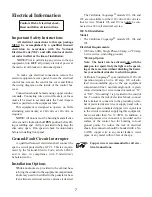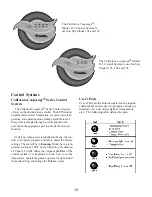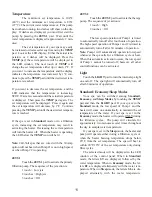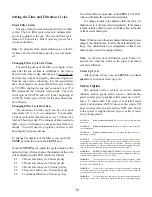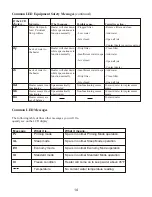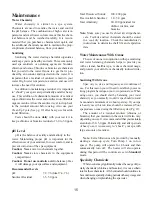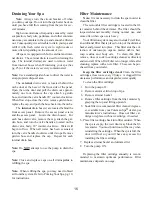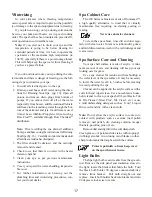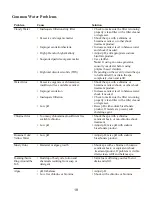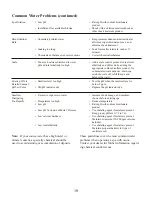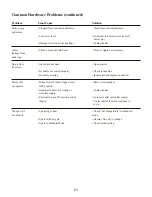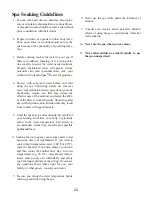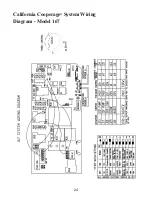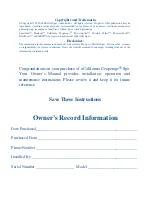
Maintenance
Water Chemistry
Water chemistry is critical in a spa system.
Chemicals are used to sanitize the water and control
the pH balance. The combination of high water tem-
perature and small water volume means that the chem-
ical balance must be watched carefully. It is recom-
mended that you purchase a chemical start up kit, and
the additional chemicals needed to maintain the prop-
er/optimum chemical balance, from your dealer.
Sanitizing
Sanitizing the water destroys harmful organisms
and keeps your spa healthy and safe. Three commonly
used spa sanitizers or oxidizing agents are bromine,
chlorine and ozone. Chlorine or bromine are chemicals
that you add to the water. Ozone is a gas that is pro-
duced by an ozonator and injected into the water. It is
important that a residual of sanitizer remain in your
water. High water temperature, aeration and use will
increase the need for sanitizer.
In addition to maintaining a residual, it is important
to “shock” your spa water periodically and after heavy
use. This addition of substantial amounts of sanitizer
super-chlorinates the water and oxidizes non-filterable
organic residue. Allow the sanitizer level to drop back
to the residual amount before using. Also use your
Clean Up Cycle (See pg. 12) after heavy use for addi-
tional filtration.
Tests should be done
daily
with your test kit to
keep a chlorine or bromine residual of 3.0 to 5.0 ppm.
pH Level
pH is the balance of acidity and alkalinity in the
water. Maintaining proper pH is important for the
effectiveness of your sanitizer, for user comfort, and to
prevent corrosion of the spa equipment.
Caution: Never
mix two chemicals together.
Caution: Never
store chemicals in the equipment
compartment.
Caution: Do not use muriatic acid
to balance pH as
it will damage your spa surface and equipment.
Recommended Levels
pH:
7.2–7.6 (Ideal 7.4–7.6)
Sanitizer Residual:
3.5–5.0 ppm
Total Dissolved Solids: 100–200 ppm
Free Available Sanitizer: 3.0–5.0 ppm
Total Alkalinity:
80–100 ppm ideal for .
dichlor, trichlor, and
bromine.
Note:
Make sure you use fresh test kit strips/chemi-
cals. Test kits and test chemicals should be stored
in a cool, dry location. Check the manufacturer’s
instructions to determine shelf life and expiration
date.
Water Maintenance With Ozone
The use of ozone in conjunction with spa sanitizing
and water balancing chemicals helps to provide you
with a cleaner, healthier spa, reduces chemical usage,
and protects your skin from chemically induced irrita-
tion.
Sanitizing With Ozone
Spas vary in size, and frequency and conditions of
use. For this reason you will need to establish your sani-
tizing program based upon your own personal use. When
using ozone, you should start by balancing your water
chemistry as you normally would. A spa should run and
be ozonated a minimum of six hours per day. If your spa
is heavily used, this run time should be increased. Your
spa produces ozone during the filtration cycles (Pg. 12).
The amount of a residual sanitizer (chlorine or
bromine) that you maintain in the water will also vary
depending on use. It is recommended that you maintain
a residual of 3.0–5.0 ppm. Periodically, and after periods
of heavy use, it is necessary to “shock” your spa with
large amounts of sanitizer.
Note:
Extra filtration can be provided by manually
starting a clean-up cycle. Turn Pump 1 on in low
speed. The pump will operate for 4 hours and then
automatically turn off. The heater will also operate
during this period if the controls are set in
Standard
mode.
Specialty Chemicals
While ozone may significantly reduce the usage of spe-
cialty chemicals (chlorine and bromine), it is not a substi-
tute for these chemicals. All chemicals should continue to
be monitored, especially during periods of heavy usage and
when changing or replenishing the spa water.
15

